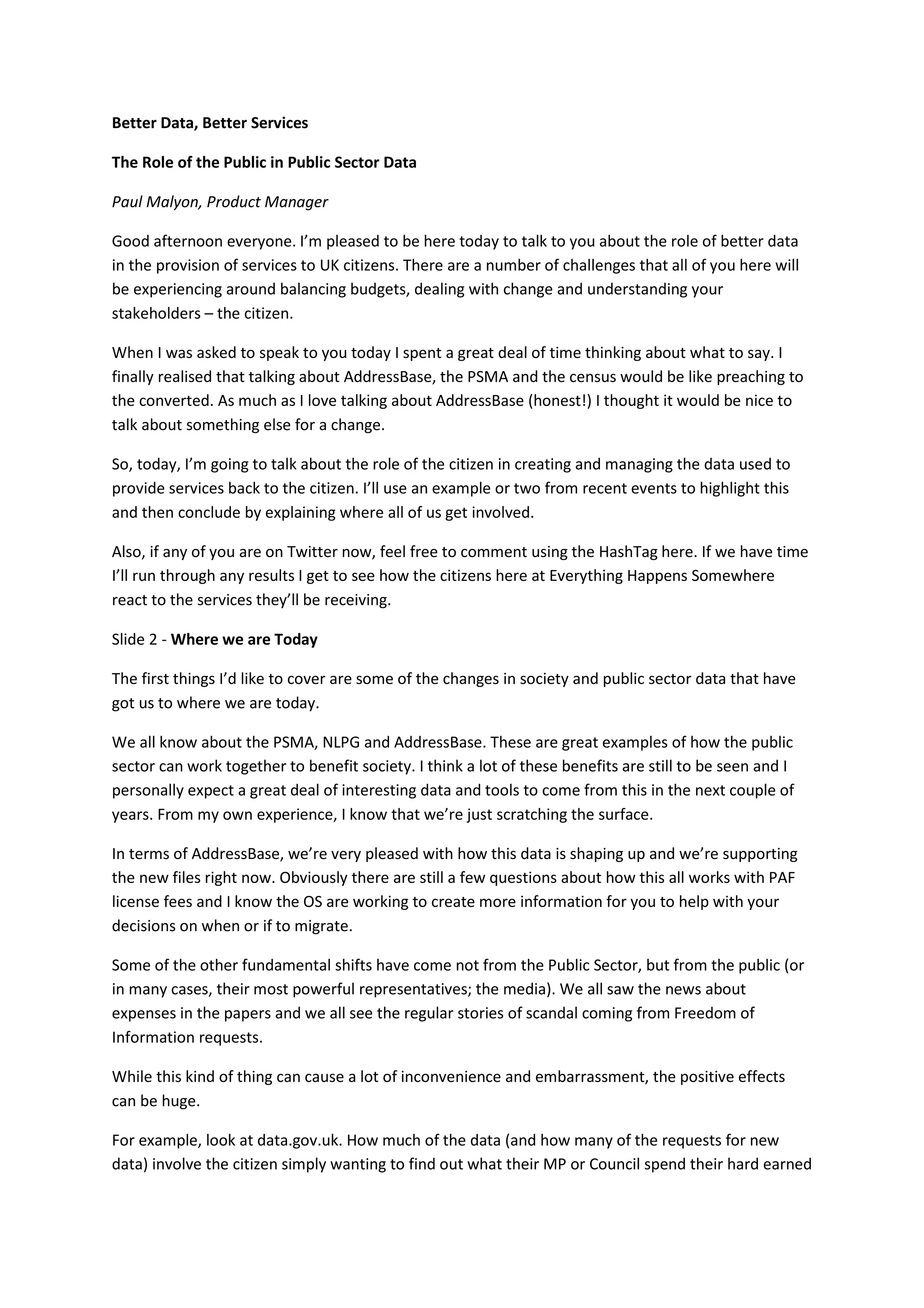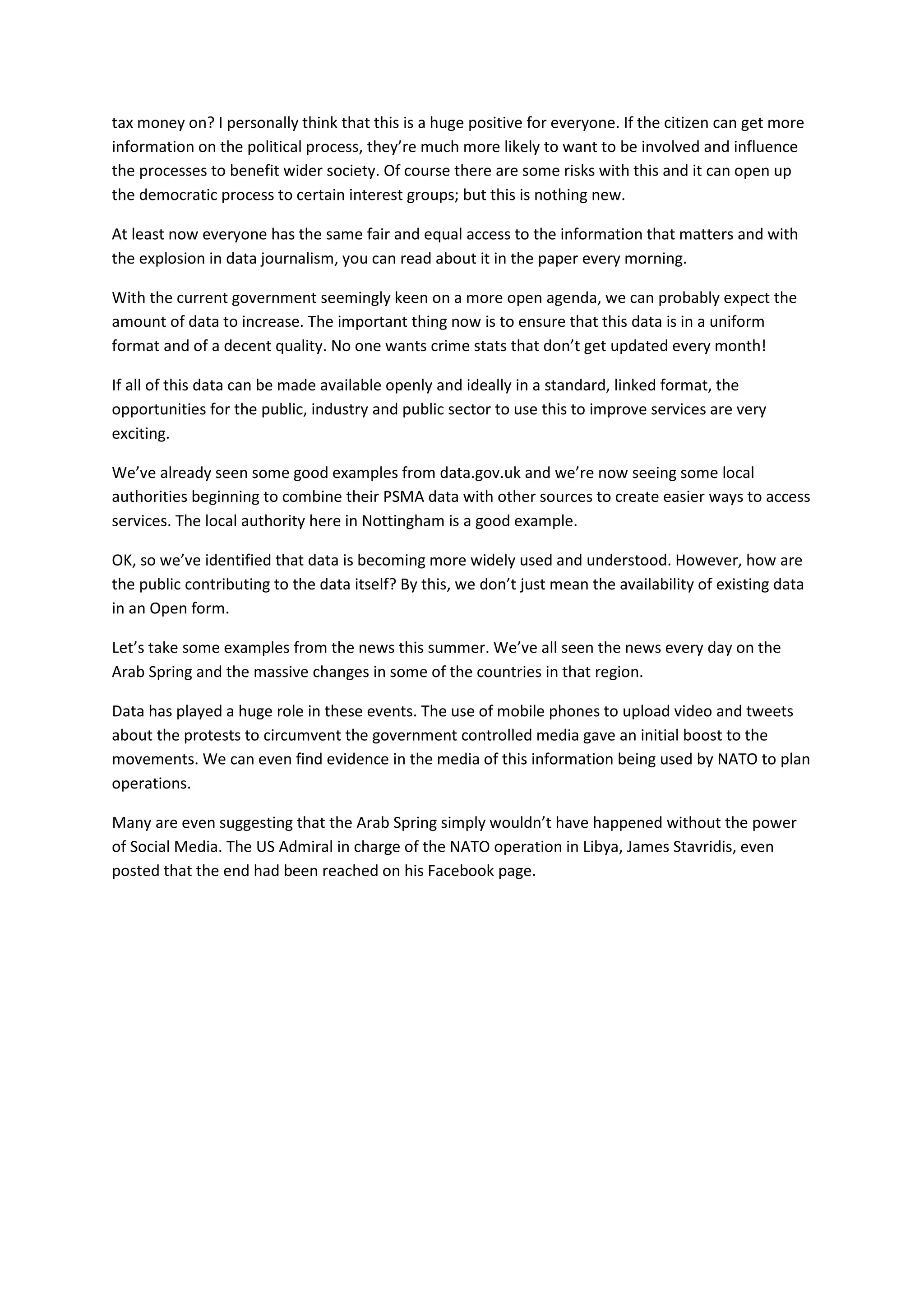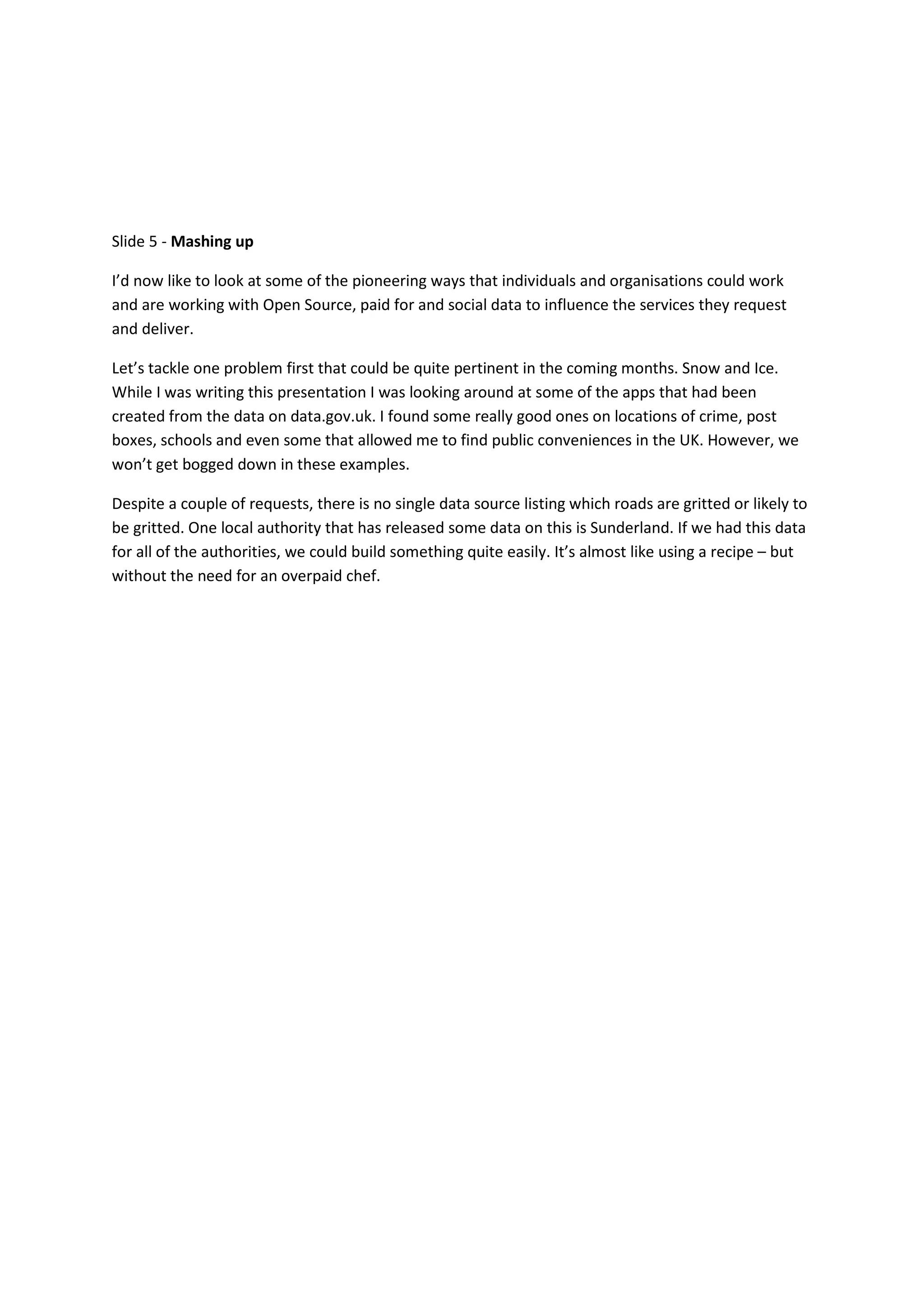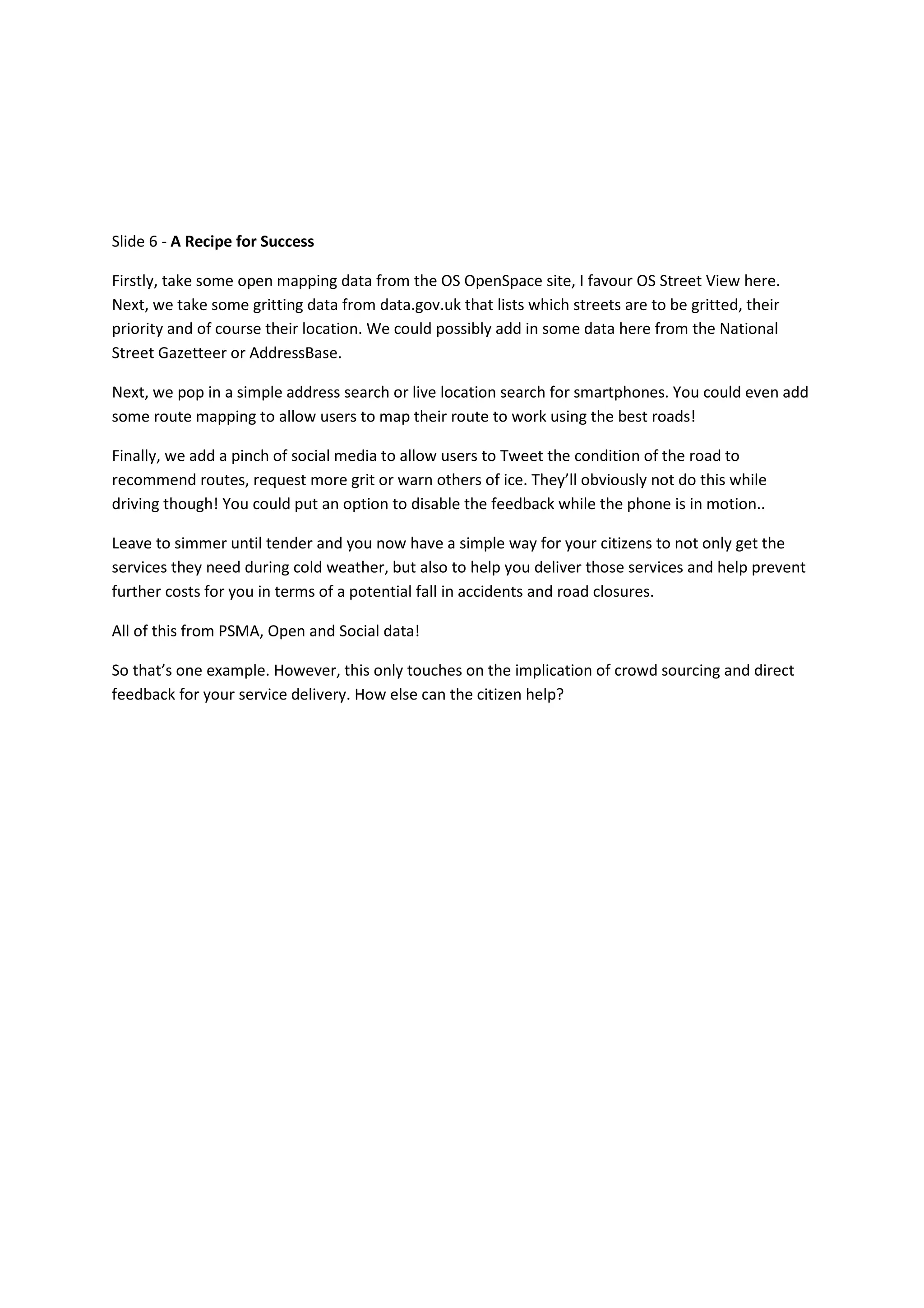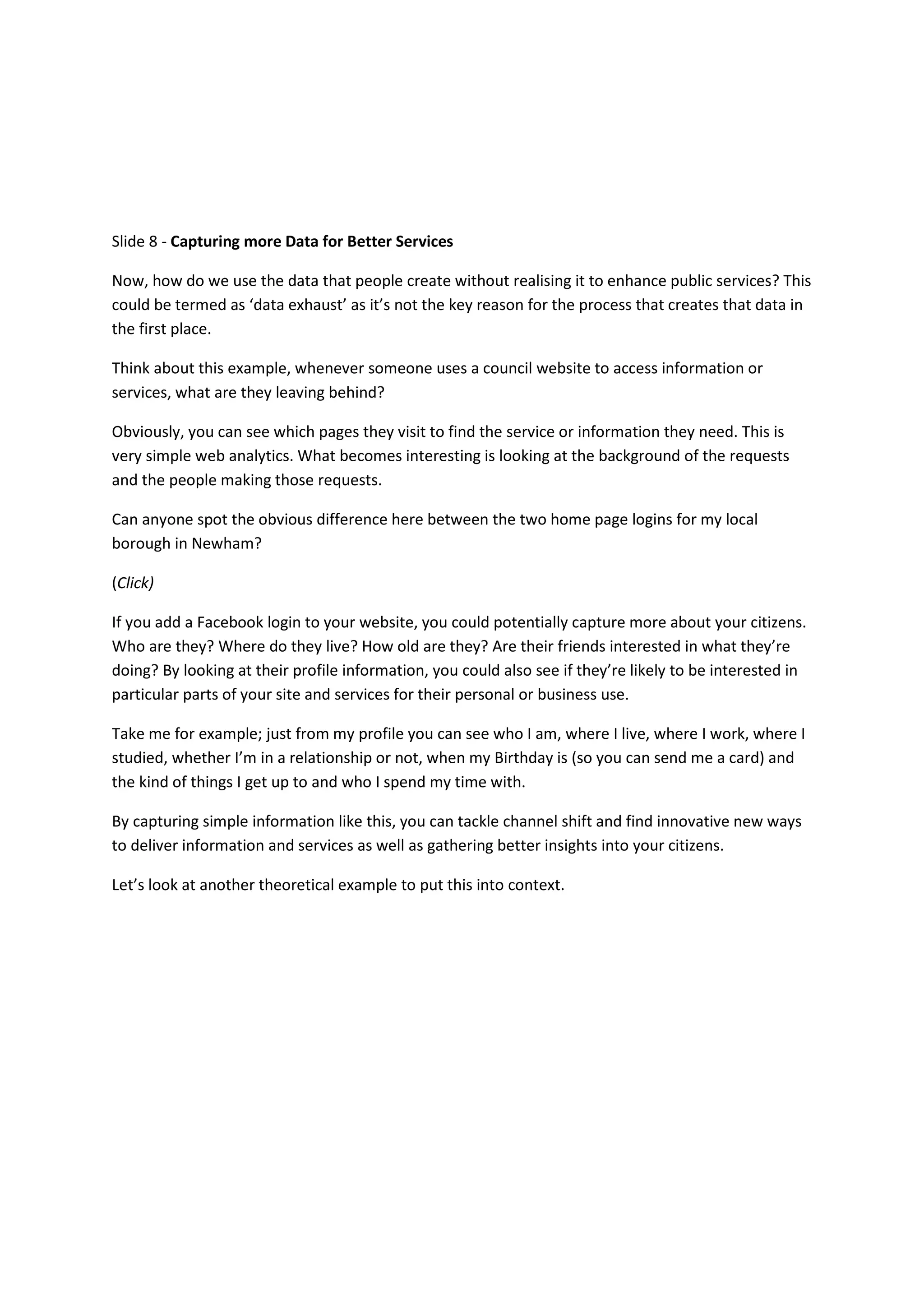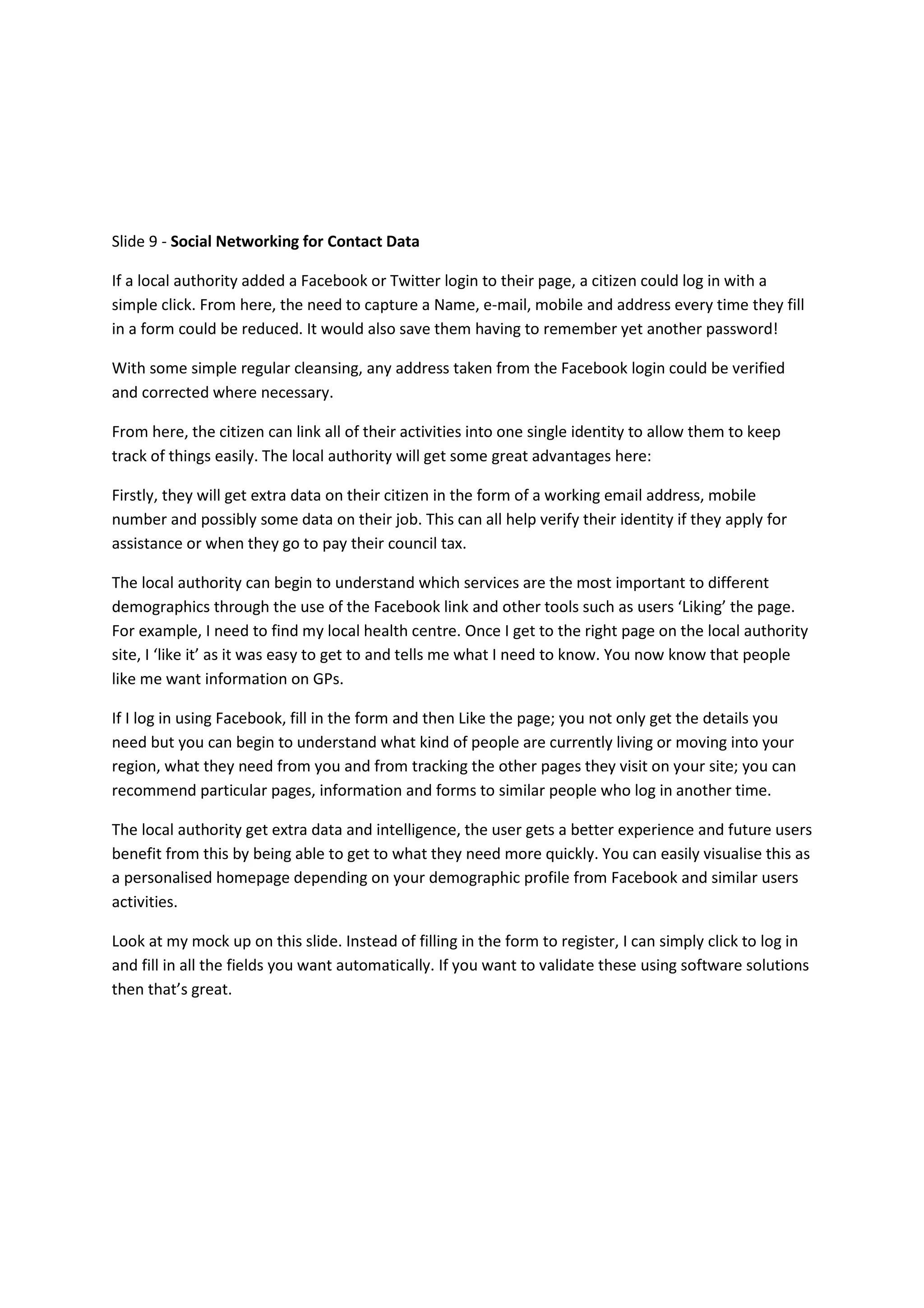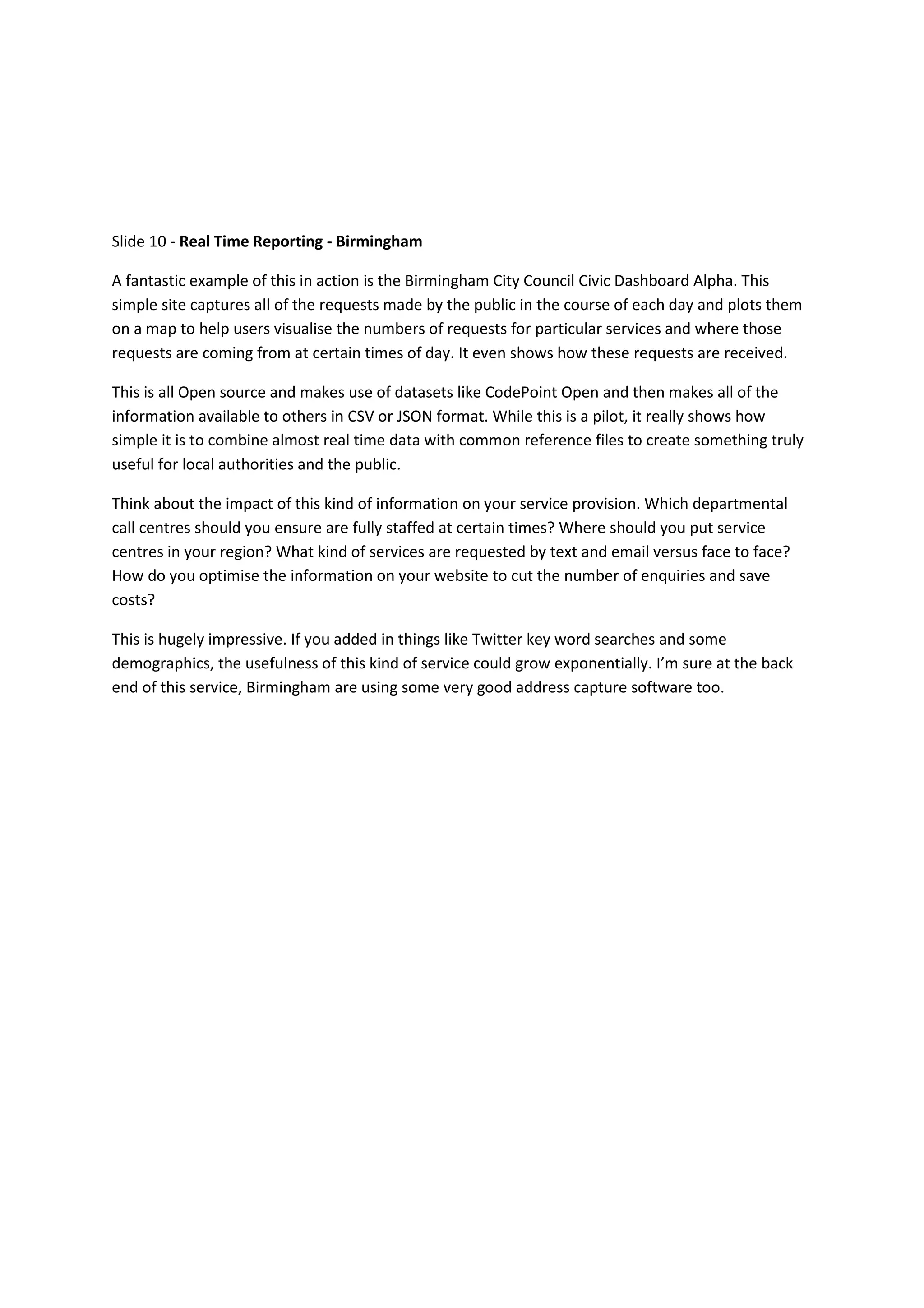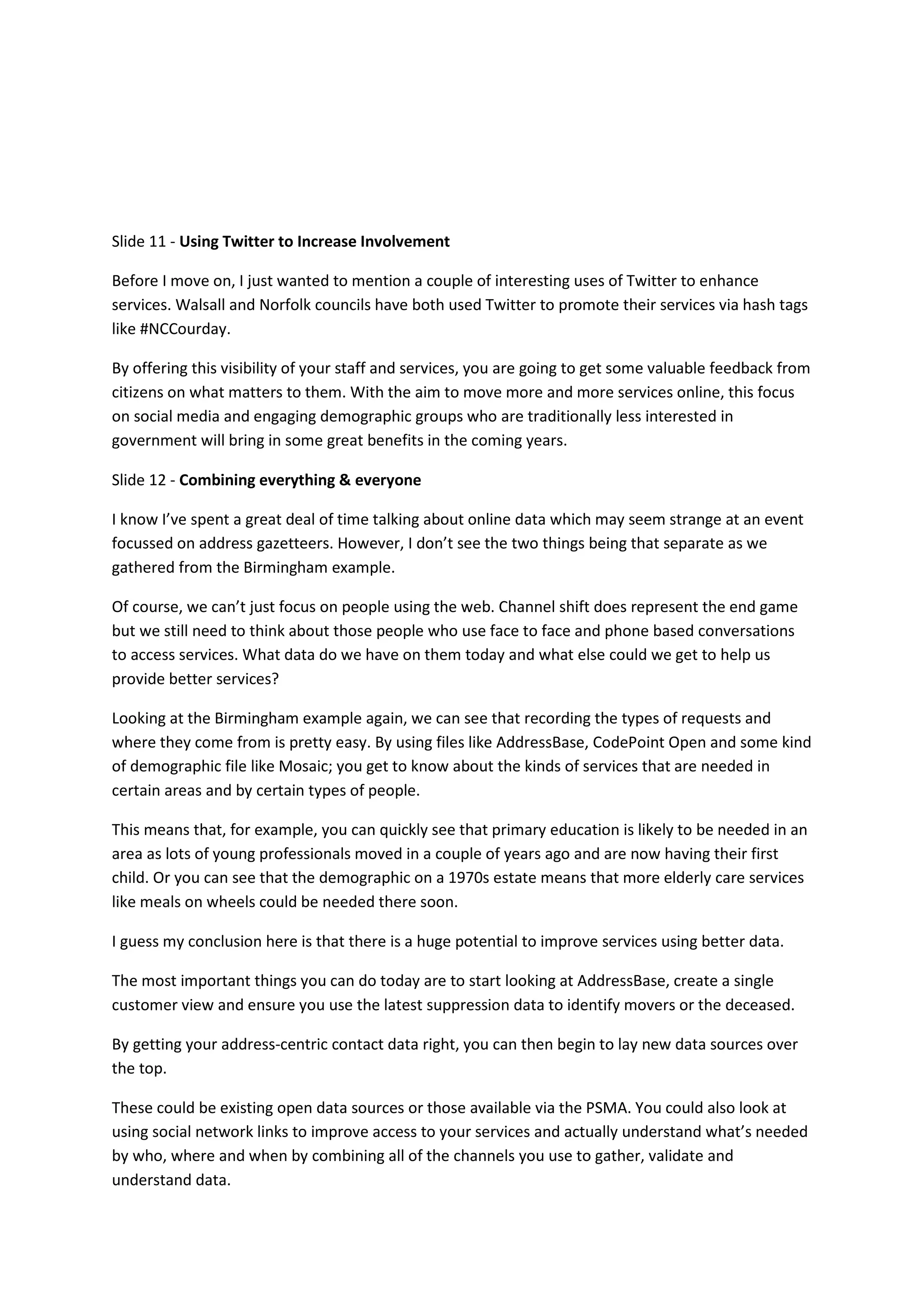The document discusses the role of citizens in contributing to and using public sector data to improve services. It provides examples of how social media data helped document events like the Arab Spring and London riots, and how analyzing resulting demographic data from criminal convictions could help target community services. The document advocates combining open data sources like road gritting schedules with mapping data to build applications that help citizens, like finding gritted routes.
